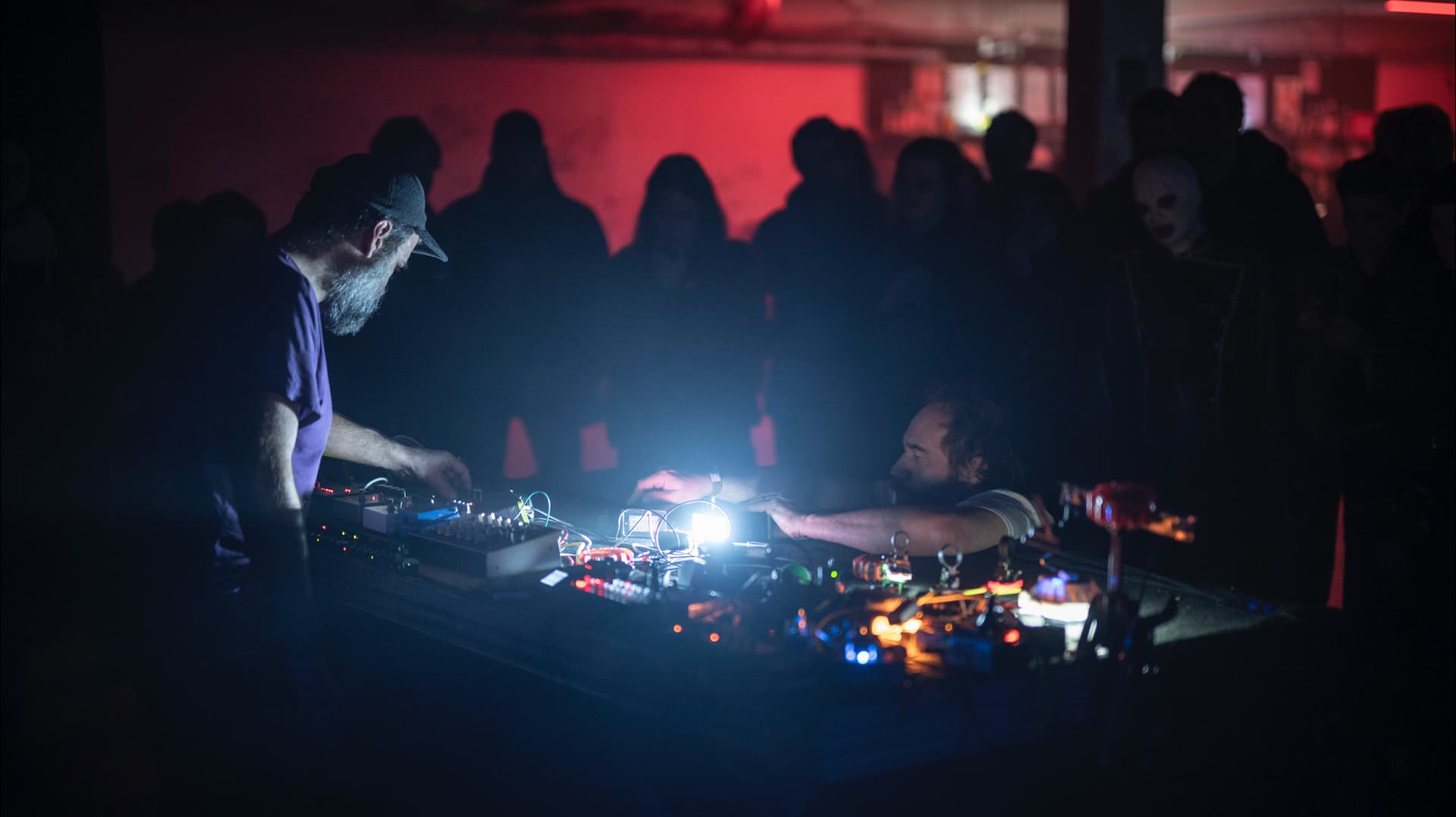
Curated by Invisible°Show
[What led you to create this duo?]
Arnaud: The name A_R_C_C comes from combining our names: A_R from me and c_c from Edouard, who actually performs under that moniker. I don’t use A_R as a solo name, but it felt like a natural combination. Regarding the project’s origins, we started by merging our solo setups, using the same equipment we had separately. At first, it was a very maximalist approach - lots of gear, a big table filled with equipment. Over time, we decided to refine our sound, focusing on a specific set of elements. For the past year and a half, we’ve been working with lights, which has shaped our performances into something unique compared to our other projects.
Édouard: For me, it all started when I saw Arnaud’s solo performance and really loved it. Not long after, we met, and I quickly asked if he would be interested in playing together. We both enjoyed it, and that’s how the project started—very simply and spontaneously.
[Can you describe the process behind choosing the instruments you use for A_R_C_C ? Where do these objects come from, and was there a particular method in selecting them?]
Édouard: The process involved a lot of trial and error, experimenting with different materials and sounds. Over time, we found that lights could produce interesting sonic results. At first, we used random lights we found in stores, experimenting to see what sounds they could make and how they interacted with our setup. Eventually, we collaborated with a synth builder, who helped us develop a dedicated light-based instrument—a kind of modulated light synthesizer designed specifically for our project.
Arnaud: During the COVID-19 pandemic, we were invited to play in Germany, and that period made us reconsider our approach. We spent time exploring new directions, particularly focusing on the performative aspects of electronic music - not just turning knobs, but considering the visual and theatrical elements.
For example, during that period, we requested the longest table possible – two or three meters long – and placed it close to the audience. This setup forced the audience to choose whom to watch, as they couldn’t see both of us at the same time. That’s when lights became an obvious focus for us. The more we explored performative elements, the more we saw that light itself could be the core of our work.
[Your 2019 album Consensus & Compromis includes audience voices. How do you incorporate audience interaction into your work?]
Arnaud: We consider ourselves live musicians. We don’t just play electronic music; we actively engage with the audience. We often perform in the middle of the room, as close to the audience as possible, making sure they don’t just hear the music but also see the interactions and gestures that shape the performance.
Édouard: We’re definitely more focused on live performance than studio recordings. Improvisation is a key part of our process, and for both of us, playing live feels much more natural than composing in a studio. Even our tapes are collages of live recordings. Most of the recordings we have, even unreleased ones, come from live performances.
[You play in various venues, from clubs and punk spaces to more artsy performance places. Is there an ideal setting for A_R_C_C, or do you enjoy the diversity?]
Édouard: There’s no perfect venue for us. As long as the sound system is good, what matters most is the people and the atmosphere. Each performance is shaped by its setting, and that’s part of what keeps the project exciting.
Arnaud: That’s what makes touring interesting. Some venues we know well, others are completely new to us, so each night feels different. It prevents the performances from becoming repetitive. Improvisation plays a big role, and adapting to each space keeps our live act fresh.
VIA G.B. MORONI 177
24127 BERGAMO
P.IVA 04712920166